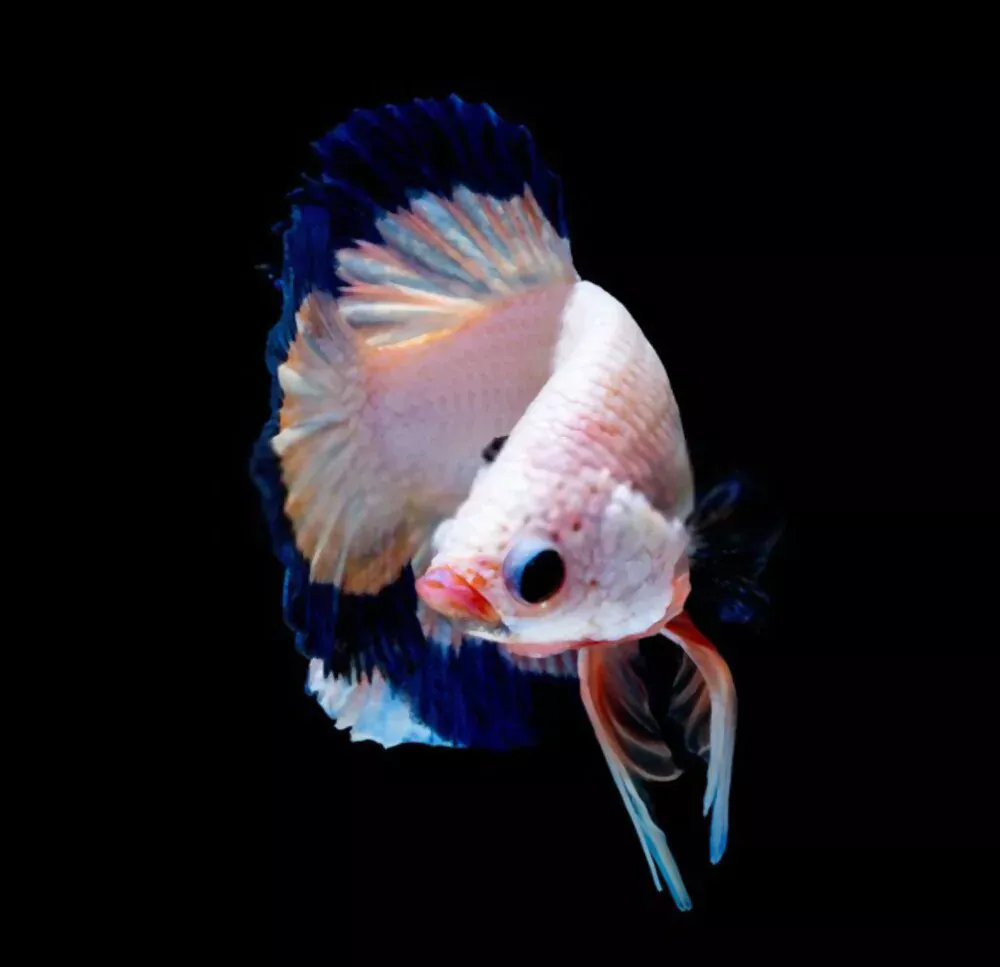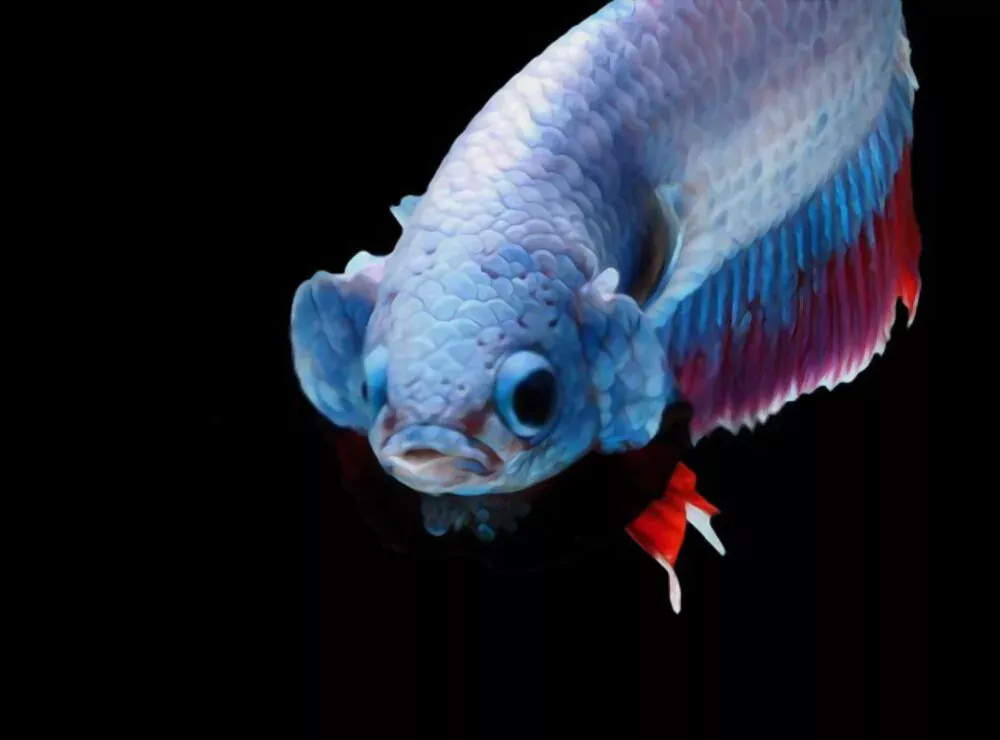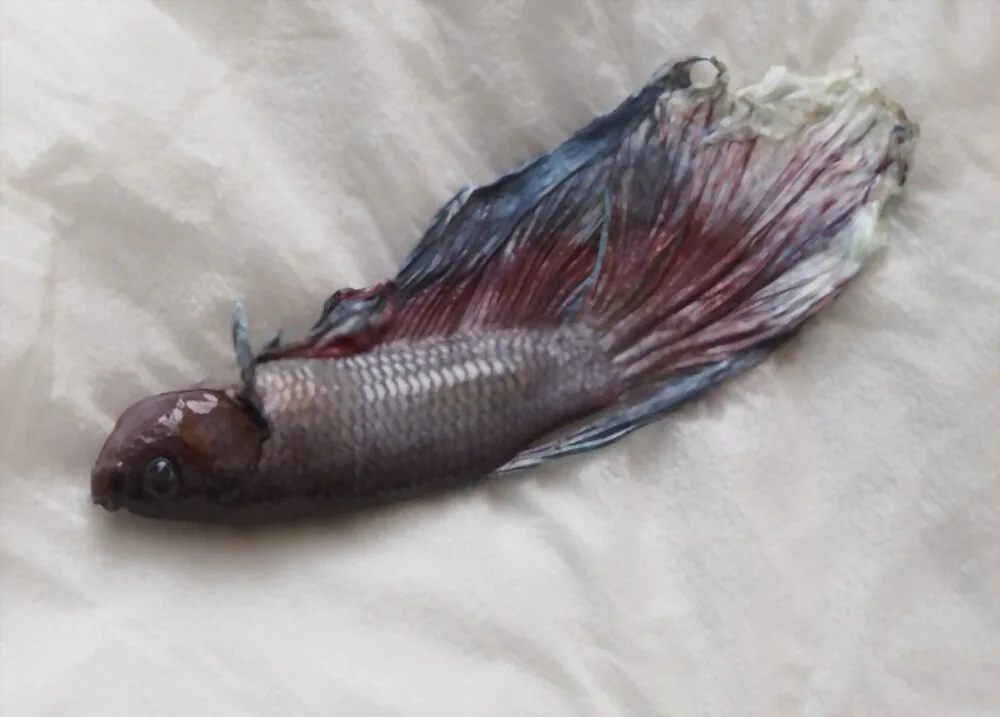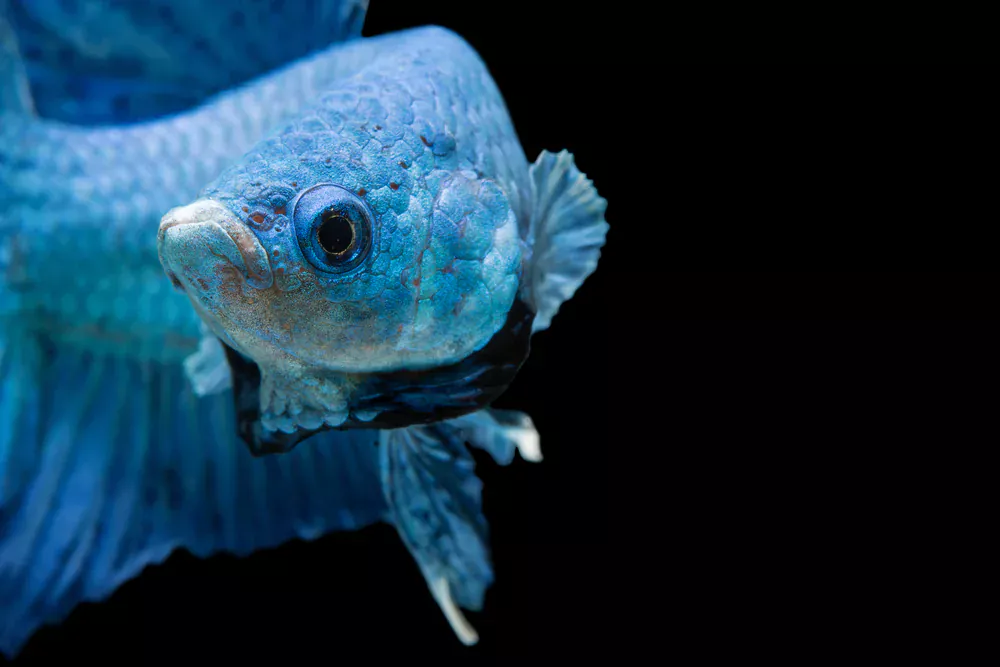Betta fish are amazing creatures with a ton of personality, and they can make wonderful pets. It’s no wonder that these beautiful fish have become so popular. As a betta owner, you want to keep your pet healthy and happy for as long as possible. That means you should know about the various conditions that could threaten your little friend’s life. Eye problems are relatively common in bettas and can be severe if not treated properly, especially Popeye disease (also known as exophthalmia). This article will help you learn more about this common betta condition, plus how to treat it.
- 1 What Is Betta Popeye?
- 2 What Does Betta Popeye Look Like?
- 3 Signs & Symptoms Of Betta Popeye
- 4 Possible Causes Of Betta Popeye
- 5 Is Popeye In Betta Fish Contagious?
- 6 How To Prevent Betta Popeye?
- 7 How To Diagnose Betta Popeye?
- 8 Does Betta Popeye Go Away By Itself?
- 9 How To Treat Betta Popeye?
- 10 Treating Betta Popeye With Epsom Salt
- 11 What If Betta Popeye Not Getting Better?
- 12 Conclusion
What Is Betta Popeye?
Betta Popeye disease is a condition that causes the eyes of betta fish to bulge out of their sockets. This condition is caused by a bacterial infection, but it’s treatable. Later in this article, we’ll discuss what causes Betta Popeye Disease and how to treat it so that your fish can recover fully from this illness.
And If you are not sure that you can treat this by yourself then you should take it to the vet right away.
What Does Betta Popeye Look Like?

When a Betta experiences Popeye, it will look as if the eyes are going to explode. The white part of the eye bulges out and looks like it’s on fire. The name Popeye comes from how this condition affects your betta fish’s body, like the famous cartoon character whose arms would stretch out when he ate his spinach! If you’ve ever seen a picture of an angry betta with its back arched up, that’s what we’re talking about.
Bettas with this disease will also often have trouble swimming properly because their bodies are too short for them to be able to propel themselves forward properly in water (they’re called “short-bodied” fish for a reason!). This makes it hard for them to breathe properly and eat food. which can lead to other problems down the road such as poor growth rates or even death!
Signs & Symptoms Of Betta Popeye
Here are some of the signs and symptoms of betta popeye:
- Eye bulging
- Redness on the sclera (the white part)
- Swollen eye or conjunctiva (the clear layer covering the eyeball)
- Eye crusting and/or discharge
If you notice that your fish’s eyes are getting redder, swollen, inflamed, or more irritated than normal and these symptoms don’t seem to be caused by another illness you may have an issue with betta popeye.
Possible Causes Of Betta Popeye
There is no single cause for betta popeye. The disease can be caused by a combination of factors, including:
- Bacterial infection
- Parasites
- Virus
- Fungus
Poor water quality is also a common cause of popeye. This may be due to low oxygen levels in their tank or poor circulation and aeration (which makes it harder for them to breathe). If you suspect that your fish has popeye, it’s important to know the causes of the disease to prevent it from happening in the future.
Is Popeye In Betta Fish Contagious?

Betta Popeye Disease is not contagious but can easily cause blindness in your pet if left untreated. This means that it cannot spread from one betta fish to another but it is very dangerous for the fish itself. However, if you have multiple tanks in your home and you want to keep your popeye-afflicted fish separate, it is recommended that you put them all into their own tank as soon as possible so they do not hurt each other’s eyes any further.
Also, remember that other people who visit your house may have pets at home with different types of illnesses, so if they visit your house for any reason (like a party or other type of gathering), be sure to ask them not to touch the infected betta fish with their hands since this could cause an infection in both living beings!
How To Prevent Betta Popeye?
Here are a few things that you can do to prevent betta popeye:
1- Monitor Water Chemistry
You need to have an idea of what your tank water chemistry is like, so you can monitor it and make adjustments as necessary. The Betta Popeye disease is caused by poor water quality, so keeping tabs on this will help you prevent it in the future.
2- Keep The Water Temperature Stable
You should always keep your betta fish at a consistent temperature that corresponds with its natural habitat, which means between 72°F and 82°F (22°C – 28°C). If the temperatures fluctuate too much, this can cause stress which can lead to disease or death in fish like Bettas
3- Maintain The pH Level
This keeps your betta fish happy and healthy! They prefer environments with neutral pH levels (6-7), so if yours goes too low or high you might see some problems with their immune system due to decreased acidity levels being present within their body tissue structure itself.
4- Regularly Change Water
Betta fish are very delicate and need to be cared for well. It is important to ensure that the water is clean, clear, and free from any impurities. The best way to do this is by changing it regularly. You can do this by placing a small piece of sponge in your tank and removing it after every few days or weeks. By doing this, you will be able to keep your tank clean and safe for your pet fish.
5- Use Filter
A filter can also be used to remove harmful toxins from your betta fish tank. Use one that is made specifically for betta fish tanks, as it will not only remove waste but also provide oxygen for your betta fish to breathe.
How To Diagnose Betta Popeye?

While Betta Popeye is not a hard disease to diagnose, it is important to be aware of the symptoms and causes.
The first step in diagnosing this disease is checking the betta fish’s eyes. If you notice signs of inflammation or infection, then you may want to take your betta fish to the vet for further testing.
Other signs of Betta Popeye include parasite infestation and injury; if you suspect any of these things might be affecting your pet, then it’s time to take immediate steps.
Does Betta Popeye Go Away By Itself?
The good news is that Betta Popeye usually goes away by itself. The bad news is that it can also get worse if you don’t treat it. The easiest way to treat this disease is by using a medication called Metronidazole, which is available at most pet stores and fish supply shops.
You may have noticed that the treatment for this disease isn’t exactly foolproof: there are several options for dealing with popeye in bettas, but none of them guarantee success.
How To Treat Betta Popeye?
Betta Popeye can be very dangerous if left untreated. Therefore, If you’re worried your betta has contracted this condition, here are some quick tips for treating it:
1- Heat Therapy
If you live in an area where cold weather is common during the winter months, place your betta in a heated tank at around 80 degrees Fahrenheit for 2-3 days after treatment begins. This will help speed up recovery from Popeye by reducing swelling and redness on the body caused by infection. (Note: Never place sick fish under direct sunlight.)
2- Antibiotics
An antibiotic may be necessary if Betta Popeye has spread beyond just one eye or if there’s no improvement after two weeks of treatment with other medications mentioned above! Talk to your vet about which antibiotic would work best based on what kind of bacteria might be causing this problem before giving them any antibiotics.
3- Reduce Stress
Another best way to treat popeye disease in bettas is to reduce their stress. Stress can be caused by poor water quality, poor diet, and fights with other fish in the tank. Reducing stress can help fish recover more quickly.
4- Improve Water Quality
Good water quality can contribute to curing popeye disease in bettas, so it’s important to keep your water clean and change it regularly. You should also make sure that you have a good filter that removes impurities from the water and is kept clean at all times.
5- Well Balanced Diet
A well-balanced diet will help betta to recover more quickly from popeye disease as well as any other ailments that may affect your betta fish’s health. The best foods for bettas are pellets which come in both flakes and pellets depending on what your betta prefers (flakes tend to be better for hardier species).
Treating Betta Popeye With Epsom Salt
To treat your betta with Epsom salt:
1- Mix 1 tablespoon of Epsom salt per gallon of water in a clean container.
2- Gently pour the mixture over your fish, being careful not to agitate it too much. You want to keep the temperature at room temperature or below as much as possible while adding the solution.
3- Repeat this process once a day for 5-7 days until symptoms cease.
If they continue after several weeks (or worsen), it’s likely that you are dealing with something more serious than Popeye disease and should consult an experienced betta owner or specialist veterinarian immediately.
What If Betta Popeye Not Getting Better?

In the event that your betta fish does not seem to be improving, you should see a vet. You can also consider calling an emergency veterinarian if your pet is in acute distress or has stopped eating or acting normally.
You may wish to consider seeing a vet if:
1- Your betta fish’s symptoms do not seem to be improving after two days of treatment and/or are worsening.
2- You are unsure about the diagnosis and want another opinion from an expert on aquatic animals.
Conclusion
Betta Popeye is a common disease in Bettas and can be easily prevented. It is treatable when it occurs, but the best treatment is prevention. Betta Popeye only becomes dangerous if left untreated, which can result in death. However, if you notice the symptoms early and follow the treatments we have provided above, then your betta should make a full recovery over several weeks.

